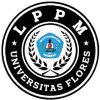Peningkatan Hasil Belajar PPKn melalui Model Time Token pada Peserta Didik Kelas V SD GMIT Ende 4
DOI:
https://doi.org/10.37478/jpm.v1i1.356Abstract
This research was motivated by the reality in 5th grade of SD Ende 4 GMIT which includes: 1) the low learning outcomes of PPKn caused by learning processes was not interesting, studentwere not active, and unseriousness students in learning; 2) learning methods that tend to be teacher-centered so that students are less active in learning. The purpose of this study is to: 1) describe the application of the Time Token Learning Model in the learning implementation plan and the mechanism of its implementation in learning the PPKn at 5th grade of SD GMIT Ende 4; 2) describe the learning outcomes of students in learning PPKn in 5th grade of SD Ende 4 GMIT after applying the Time Token Learning Model. This method of research is a classroom action research study consisting of 2 cycles, where each cycle applies Action Research Design by Kurt Lewin which includes the stages of planning, implementing actions, observing and reflecting. The method of data collection methods are tests, observations, interviews and document studies. The results of this research is Time Token Model can improve the learning outcomes of PPKn on 5th grade students of SD GMIT Ende 4. This is evidenced by the average value of learning outcomes and the percentage of students completeness classical after the Time Token Model is applied. At the time of the pretest, the average value of PPKn learning outcomes was 53.57, with a classical completeness percentage is 21.43%. This result has increased in first cycle with average value is 69.64 and the percentage of classical completeness is 35.71%. In second cycle, learning outcomes average value has increased to 99, 28, with percentage of classical completeness is 100%.
Downloads
Keywords:
Learning Outcome, Time TokenReferences
Huda Miftahul. Model-Model Pengajaran dan Pembelajaran. Yogyakarta: Pustaka Pelajar, 2013.
Istarani. Model Pembelajaran Inovatif, Referensi Guru Dalam Menentukan Model Pembelajaran. Medan: Penerbit Media Persada, 2011.
Junedi dan Anggiani, “Penggunaan Model Pembelajaran Time Token Terhadap Pemahaman Konsep Matematika Siswa Kelas Viii Smp”, MES (Journal of Mathematics Education and Science), Vol. 4, No. 1. Oktober 2018, Universitas Islam Sumatera Utara.
Marfuatun, dkk., “Pengaruh Model Pembelajaran Time Token Terhadap Aktivitas Belajar Sejarah Siswa Kelas X Pesagi”. Jurnal Pendidikan Dan Penelitian Sejarah. Vol 2, No. 2 Tahun 2014. Universitas Lampung.
Mauliza, dkk. “Pengaruh Model Pembelajaran Kooperatif Tipe Time Token Arends terhadap Hasil Belajar Siswa Pada Materi Sistem Pernapasan di Sma Negeri 5 Banda Aceh”, Jurnal Ilmiah Mahasiswa Pendidikan Biologi, Volume 1, Issue 1, Agustus 2016, Universitas Syiah Kuala, Aceh.
Nardiani, dkk. “Penerapan pembelajaran Model Time Token Arends untuk Meningkatkan Kemampuan Bertanya dan Hasil Belajar Mata Pelajaran Ekonomi di Kelas X IIS 4 SMA 1 Batu, JPE-Volume 8, Nomor 2, 2015, Universitas Negeri Malang
Nurfirdaus dan Munandar, “Penerapan Model Time Token Untuk Meningkatkan Hasil Belajar Ilmu Pengetahuan Sosial (IPS) Kelas V SD Negeri Pajambon”, JURNAL LENSA PENDAS, Volume 3 Nomor 2, September 2018, STKIP Muhamadiah Kuningan.
Rahman, dkk. “Penerapan Model Pembelajaran Time Token Dalam Meningkatkan Hasil Belajar Bahasa Indonesia Siswa SDN 200 Lompu Kecamatan Cina Kabupaten Bone”. JIKAP PGSD: Jurnal Ilmiah Ilmu Kependidikan Vol,1. No.1. Tahun 2017, Universitas Negeri Makassar.
Sanjaya Wina. Strategi Pembelajaran. Jakarta. Kencana Prenadamedia Group, 2014.
Sari dan Usmadi. “Penerapan Model Pembelajaran Kooperatif Tipe Time Token Disertai Pemberian Kuis dalam Pembelajaran Matematika.AULADUNA: Jurnal Pendidikan Dasar Islam Vol. 4 No. 2, December 2017, Universitas Islam Negeri Alauddin Makassar.
Silberman Mel. Active Learning. Yogyakarta: Pustaka Insan Mandiri, 2009.
Sudjana, Nana dan Ibrahim, Penelitian dan Penilaian Pendidika. Bandung: Sinar Baru Algesindo, 2009.
Sukmayati, “ Improving Speaking Ability Of The Eleventh Year Students Of Sma Laboratorium Unsyiah Banda Aceh By Using Time Token Arends Technique”. Getsempena English Education Journal (GEEJ) Vol 1, No 2 tahun 2014, STKIP Bina Bangsa Getsempena Banda Aceh
Suprijono, A. Cooperative Learning: Teori dan Aplikasi PAIKEM. Yogyakarta: Pustaka Pelajar, 2013.
Utami,dkk. “Penerapan model Time Token dengan Media Photo Story untuk Meningkatan Keterampilan Bercerita pada Siswa Kelas IV B SD Negeri 2 Kebandongan Tahun ajaran 2015/2016.” Jurnal KALAM CENDEKIA, Volume 4, Nomor 6. 1, Universitas Negeri Sebelas Maret.
Windi, dkk. “Keefektifan Model Time Token terhadap Pemahaman Konsep Matematika pada Siswa Kelas IV SDN Kedungrejo 02 Tunjungan Blor” Jurnal Sekolah (JS). Vol 2 (4) September 2018, Universitas Negeri Medan.
Downloads
Published
How to Cite
Issue
Section
License
Copyright (c) 2020 Maria Kewa, Agustinus F. Paskalino Dadi, Adi Neneng Abdullah

This work is licensed under a Creative Commons Attribution-ShareAlike 4.0 International License.













